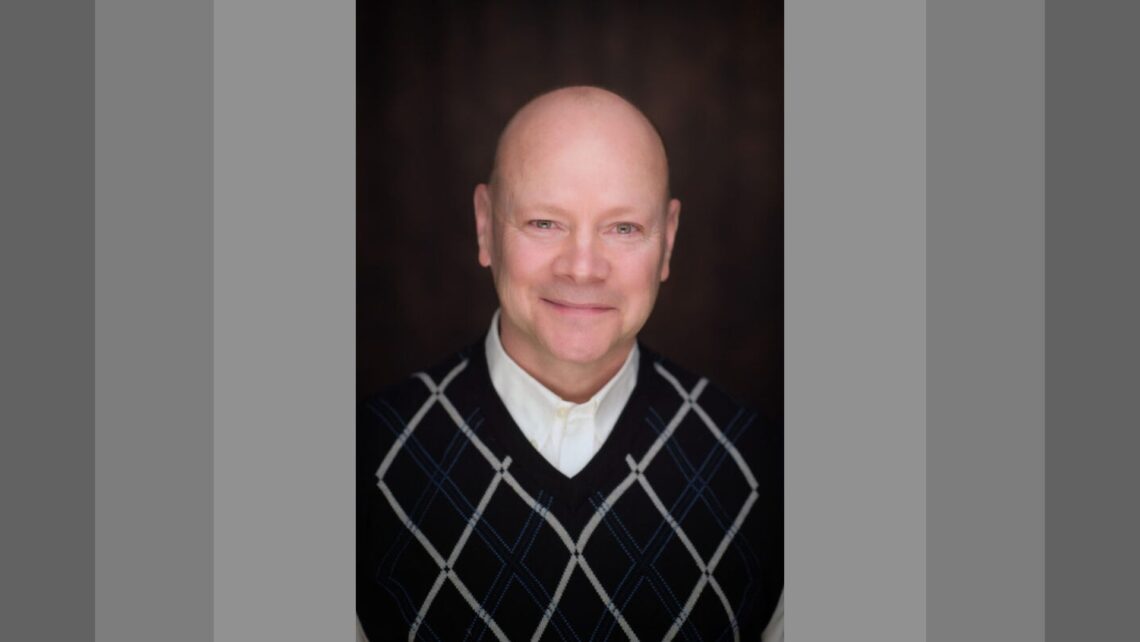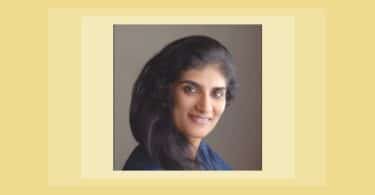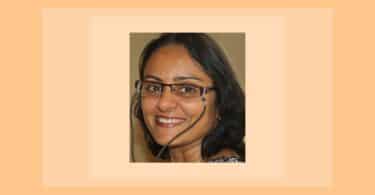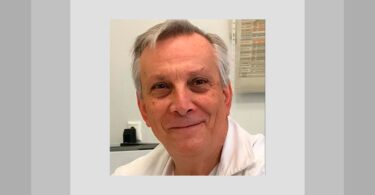Homeopath David Johnson is interviewed by Vatsala Sperling about his new book Radiance, Resonance and healing; The Homeopathic Periodic Table.


David Johnson, CCH, RSHom(NA) practices in Madison and Pewaukee, Wisconsin, and is an instructor at the Northwestern Academy of Homeopathy in Minnesota. He is also an Hpathy team member and the author of numerous articles.
Editor’s note: Please see Vatsala Sperling’s review of David Johnson’s book in this issue. LINK TO VATSALA’S BOOK REVIEW
VS: Please tell the readers what prompted you into choosing such a sweeping title for your book, ‘Radiance, Resonance and healing; The Homeopathic Periodic Table”
DJ: The book’s title, “Radiance, Resonance and Healing” was used because Radiance emphasizes the energetic state of homeopathic elements; Resonance emphasizes the need for correct matching with the state of distress; and Healing is the ideal we seek as the result.
The book is laid out in a very specific way, because certain basic principles lay the groundwork for understanding others. The horizontal Series (rows; settings in which a problem is occurring) and vertical Stages (columns; themes of connection or disconnection, support through external structure, and sense of inner capacity) are covered first before covering the Lanthanides and Actinides.
The process of recognizing cations and anions are also reviewed, as are general thoughts regarding case-taking. So, it’s meant for a practitioner’s general reading as well as a reference in the office. Because it’s the first book to cover the entire table, my hope is that it offers another stepping stone for learning and applying homeopathy for the benefit of our profession and those we serve.
VS: What inspired you to write this book?
DJ: Elements and compounds seemed to come easier for me, and I hoped to articulate some general principles about the table in simpler (but not simplistic) language.
Once I began jotting down notes about the elements, however, I was surprised how the writing took on a life of its own. A number of unexpected and surprising questions came up, and in fact, it felt as though the elements were teaching me through the process of writing.
In fact–I’m laughing now–I learned that if anyone wants to become proficient in a subject, try writing a book about it! The process of “wrapping words around energy states” was particularly revealing–e.g., describing the phosphorus state, beyond simply repeating words written elsewhere many times.
After the book was done, so much more had been covered than I could have imagined from the beginning, and the innate coherency and progression of elemental themes from lightest to heaviest was much more clear. And significantly, the experience of elements within myself was also more immediate and applicable to practice.
VS: You mentioned in the book, ‘Elements in the chemical world appear contained within the squares of the periodic table but as remedies they are alive and free of measurable boundaries.’ Please could you elaborate on this idea.
DJ: This process of experiencing a remedy state within oneself is something that happens to all homeopaths. Our recognition of the Arsenicum state may begin with a memory of keynotes, but then those keynotes are eventually translated into a more intuitive experience, allowing for more subtle recognition when the same “energy” is described by clients. The somewhat static, confined keynotes of elemental language are “brought to life without boundaries” through our inner experience. Accordingly, I intentionally wrote remedy descriptions in the first person: “In an Arsenicum state, we feel…”
VS: Please talk about the latitude and longitude concept used in your book. How are they different from 7 series and 18 stages used by Scholten, as well as columns and rows used by the Joshis?
DJ: The table revealed itself to be an amazing reflection of human experience, all the way from incarnating, departing the womb, developing a sense of separate identity and navigating social interactions, to applying those skills in the greater world of pragmatic task organization, creative expression, greater responsibility to others and the world and universe.
As an analogy, I used the image of a globe encircled by a ribbon of elements, where a person’s incarnation (hydrogen) starts at the top and then traverses a circumferential path around the earth. While this metaphor emphasizes the continuity of increasing atomic weights and corresponding homeopathic challenges within the table, the Series (horizontal rows) and Stages (vertical columns) can also be understood through a globe’s lines of latitude and longitude, respectively.
VS: You stated that ’Neighboring elemental energies blend into each other like a rainbow’s colors, so their indications for use can also overlap.’ Also, in your observation of using mineral remedies, have you found that people move in the latitude and longitude as they move through life? Or, are people perpetually stuck to a position on the grid? In other words, can people call out for different mineral remedies in different stages of their growth and development?
DJ: The progression within the table revealed how the energies of elements, while still distinct from each other, seem to blend into each other. A couple simple examples are how Phosphorus and Sulphur, next-door neighbors horizontally, are found in the rubric “delusion is a great person.” Or Palladium and Platina, vertical neighbors, are found in the rubric “delusion not appreciated.”
The progression also revealed that there is no one step (element) that is more “important” than any others. The ever-increasing elemental weights within the table do not reflect a hierarchy of worse to better, but rather the challenges each element represents. While the person’s state of distress can shift over time, requiring different elemental remedies, the progression of healing is not related to the organization of the chart itself, but rather the easing and lifting of distress experienced by each of the elemental states.
VS: In your book “Radiance, Resonance and Healing: the Homeopathic Periodic Table” the descriptions of elements read like picture postcards of the essence of the elements. By becoming fluent in the language of essences, how easy or hard is it going to be for a practitioner to spot an element in a patient’s narrative? Also, how do you determine that a patient would benefit from a mineral remedy? Do you also listen for mineral words and sensations?
DJ: In terms of homeopathic practice, then, the table is particularly useful when a person is challenged by concerns related to external support and connection with others, by one’s sense of confidence and inner capacity with new challenges, and by different unresolved developmental experiences.
The innate organization of the table helps the homeopath to quickly navigate the “big picture,” and then zero in on more specific groups of elements matching the history. Considering all the potential elemental compounds, one can literally scan and discriminate between hundreds of possibilities in just a few minutes.
At times a person’s descriptions may include the “mineral language” of structure and performance. Alternately, when we focus on the content first and foremost, with all of its twists and turns, we’re not trying to solve the history too quickly. Instead we’re allowing the state to eventually declare itself, at its own pace and time, even if that means trusting as we sit in the unknown…!
In most cases the elements have been described in terms of the mental and emotional realms, because descriptions of physical challenges are easily available elsewhere, and many elements have incomplete provings. And, if we are patient, physical complaints will also lead seamlessly into the associated mental and emotional distress. Just as Hahnemann emphasized in Aphorism 210 the pre-eminent importance of mental and emotional states in disease, these realms are also central to assessing response to remedies through direction of cure.
As an example, a person may be talking about lack of confidence and how it brings on headaches. We can discern whether their lack of confidence relates to social interaction, or concerns relative to performance, or both. Then we need to carefully understand how the confidence problems have expressed themselves in the past, as well as specific settings in which the problems occur.
This gives us the general sense of Series (setting) and Stage (level of confidence) which gives us the cation (first part of the compound.) We can also listen for broader themes or tones within the history–‘if I don’t do well people will be disappointed and won’t want to be friends with me.’
If the person feels their progress in playing in an orchestra is very inconsistent, and their ultimate concern is others’ disappointment and potential abandonment, we could consider Niobium Muriaticum. And progress at the follow-up should show that problems with confidence are resolving, and their headaches are improved as well.
Finally, when we’re trying too hard to match a history with a mineral compound, it’s usually a sign we need to look elsewhere, and the table can be a stepping off point for understanding other kingdoms.
Insofar as we can think of the table’s elements as nature’s building blocks, there are numerous elements that act as doorways into other kingdoms. One example is how the sense of targeting with Bromine can occur with any targeted or persecuted animal.
The desire for structure in the first and second columns of the table can also be related to domesticated animals, and the 3rd column is similar to animals who sit on the interface between domestication (2nd Stage structure) and freedom (3rd Stage autonomy)–cats, horses, peregrine falcons, etc.
The element chlorine (muriaticum,) the most abundant element in the sea, is related to all of the sea remedies, and the sensitivity of gases is seen in the plant kingdom as well.
This conversation with David was inspiring to me in many ways and his book “Radiance, Resonance and Healing: The Homeopathic Periodic Table” is inspiring too, because it gives snap-shots of the essence of elements that we can relate to readily in our day to day practice.







Excellent interview Vatsala. Your questions brought out all the pertinent information. David Johnson is a master of periodic table.